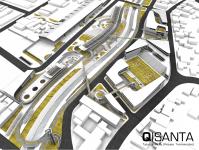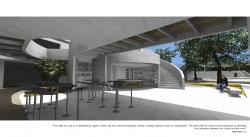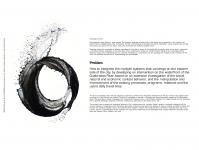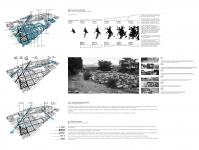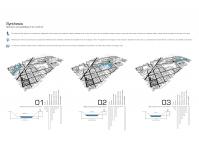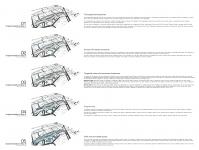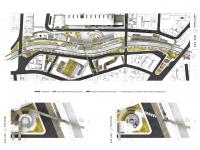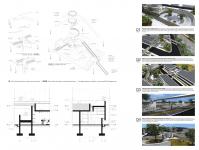Q|Santa consists of an integral project that seeks to generate a vision of a city that doesn’t deny its context or itself, where its systems and functions are integrated and overlapped, trying to find the most appropriate way to combine the urban artificial systems with the natural systems, through the generation of relationships of dependency that have been tested in other latitudes, where both systems benefit and become optimized.
It’s based on the thought that the city is written, erased and rewritten by itself continuously according to its changing context, new demands, and its new operating systems.
The increments of the urban complexity are dictated by the increase in the amount of information that each city stores, the cultural hybridization, the evolution of knowledge, the demand for new activities and programs, and the awareness of resource management. The innate human need to enhance and form new relationships, new connections, has been the determining factor in the process of shaping a new perspective of the outside, of a dynamic and contemporary city, but above all, human.
This project is developed under the theory of the topological behavior of the contemporary city: the new cities, complex, flexible, dynamic, fluid, in constant change; and the various relationships of dependency and interaction generated among its many layers and systems. It pays special attention to the relationships between natural and artificial urban systems; pathological problem that is present in basically every city in the countries of Latin America, and the implementation of these theories in the case of the Quebradas River’s waterfront, within the city limits of San Isidro del General, Perez Zeledon.
The intervention aims to be a means to adapt the city to face the current circumstances, resulting from the inconsistencies in the economy and the displacement of the agricultural sector, which has left a high percentage of general unemployment, and an accelerated city growth without a plan or strategy, because of the high immigration rate to the city of people seeking for better working conditions and a better quality of life.
It tries to orientate the urban growth towards a more human way, in a more integrated, efficient and sustainable manner. It seeks to make the city more habitable, profitable and competitive.
Through the city analysis the problem arose:
How to integrate the multiple systems that converge on the eastern side of the city, by developing an intervention on the waterfront of the Quebradas River based on an extensive investigation of the social, natural and economic context behavior, and the manipulation and improvement of the existing processes, programs, relationships and the users daily travel lines.
2010
2011
The selection of the materials involved a careful process, considering that they would define the project’s general and final language. Since it’s an urban project, it must show strength, high quality, have a long lifespan and be resistant to extreme conditions. The context also has some special conditions: first, the river, therefore the material needs to be resistant to possible flooding, and secondly, a very warm climate, so the material must have some heat-resistant qualities.
It also requires some specific design qualities: a very strong language, a strong character, it should be stereotomic, but a stereotomic material with the capacity to violate the gravity law.
Concrete became the best choice for the project, because of its flexibility and many options: floating slabs for public and permeable spaces, in order to not interfere with the flow of underground water, pre-stressed and post-tensioned concrete for the bridges and suspended elements, reinforced concrete for free, organic, radial and continuous forms, walls, columns, and most of the beams and floors.
Among the secondary materials are: wooden decks with steel structures, which allow a high permeability, wood in interiors and steel roof structures.
Arch Alejandro Nuñez López
Favorited 1 times

